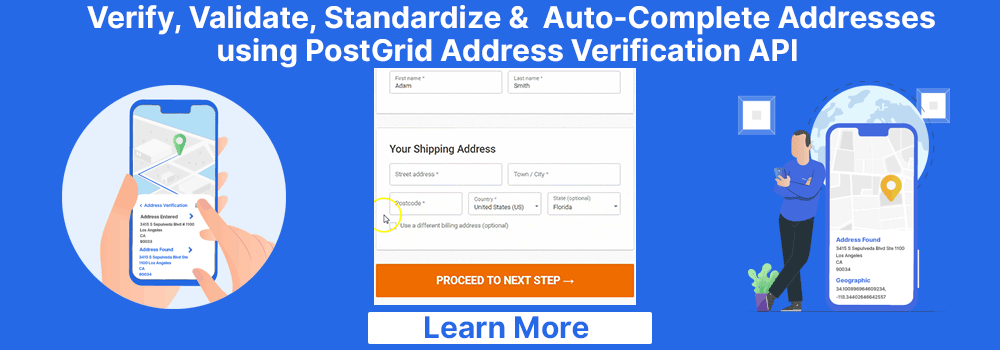
Account Verification Letter: What Is It? How To Write It Effectively? And Samples
Security and trust are two essential parts of every business organization. They are two sides of the same coin because neither one can not exist without the other.
A perfect example is businesses using an account verification letter as assurance against future payments. Banks and other financial institutions ensure trust and security between business organizations.

One of the best ways or tools a bank or financial institution can use to accomplish this is an account verification letter. Today, in this article, we will talk about a bank verification letter and how banks can use it to help customers with their business and personal payments.
Banks and financial institutions often have to draft verification letters, and we explain how you can create one. We will also take you through some sample verification letters to give you a complete idea of your account verification letter.
What Is An Account Verification Letter?
An account verification letter is also called a bank verification or bank confirmation letter. It is a letter banks or financial institutions send a customer confirmation on the existence of a line of credit or loan.
The letter is an official indication that the customer is eligible to borrow a specific amount of funds for particular reasons. We do not mean that the bank verification letter acts as a guarantee of payment. Your customer can only use the letter as a confirmation from the bank that they have access to a specific sum in their bank account.
It is more apt to call an account verification letter an assurance of payment rather than a guarantee. Why? Because the verification letter does not make the bank or financial institution responsible for its customer’s payment dues.
Typically, business organizations use the account confirmation letter to assure their creditworthiness. You can also issue a verification letter to companies when they partner with another company.
It allows the partnering company to ensure that your customer has the financial backing to get into a working relationship with them. Banks and financial institutions can also send a bank verification letter to individuals trying to secure a mortgage or establish a seller’s creditworthiness.
How Does An Account Verification Letter Work?
The bank verification letter’s primary purpose is to assure its customers’ financial backing. Companies typically use this assurance from their bank for transactions from a third party, typically a seller.
It shows the third party that an individual or business organization has the financial capacity to make necessary payments for their transaction. In most cases, the transactions involve the purchase of goods or services.
For the account verification letter to be valid, it needs to have the signature of an authorized bank official. A bank or financial institution issues a confirmation letter for specific projects or transactions.
It means the account verification letter your bank or financial institution issues is not transferable to a different project/transaction. Your customer must request a new confirmation letter to assurance for a new project or transaction.
For example, let’s say a B2B company invites tender from multiple sellers in the city. After fixing a seller and getting the corresponding account confirmation letter, the company decides to switch the seller. Here, the confirmation letter specifies the first seller, not the second one.
B2B businesses must obtain a new bank account confirmation letter in such cases. The regulations and details required for a confirmation letter can vary from one country to another. Additionally, the extent of detail to include in the confirmation letter can vary depending on the regulations.
 Also Read: Notice of Cancellation Letter Template
Also Read: Notice of Cancellation Letter TemplateElements To Include A Bank Verification Letter
Every bank verification letter is unique because you must write a separate one for each transaction or project. But that doesn’t mean that each confirmation letter is entirely different. You don’t have to start from scratch when you need to write a confirmation letter for one of your customers.
There are common elements that you can notice in every account confirmation letter you send your customers. You can identify and use these common elements in the verification letter to create a template for your business letters. Additionally, you can use a fully automated print and mail solution like PostGrid to automatically deliver your letters.
Following are the elements you should include in the standard account verification letter you send on behalf of your customers.
Name of Requester
The requester’s name is one of the primary elements to include in your account verification letter. In short, it refers to the Organization or individual who wants to confirm your customer’s bank account details or the seller. It would be best if you kept in mind that the entity requesting the confirmation letter could be an individual, a business, or an organization.
Name and Address of The Bank
You must disclose your bank’s name to assure an organization or an individual about your customer’s financial backing.
It is crucial to mention the name and address of your bank’s branch in the account verification letter. The branch address should be the same as the branch location where the customer maintains their bank account.
Name Of The Account Holder
Another crucial element you must remember to include in the bank verification letter is the account holder’s name. You can only send a confirmation letter with the current account balance. The requester needs to ensure that the account and the details in the letter belong to your customer.
Account Number
In addition to the account holder’s Name, you must also provide the bank account number in the bank verification letter. It is the same number you generate for your customers when they first open their account in your bank. Including the account number in your confirmation letter is just as important as including the customer’s Name and other details.
Account Opening Date
An additional date you can typically see in a standard account verification letter is the Date of account opening. It is the day the customer opens an account with your bank or financial institution. The requestor can use this detail to ensure the validity of your customer’s bank details you provide in the letter.
Outstanding Balance
The outstanding balance is usually the most crucial element in an account confirmation letter. Generally, it is the primary data the requester wants to know for checking customers’ creditworthiness. Outstanding balance shows the amount of money in your customer’s account.
What Is The Format You Should Use For Your Account Verification letter?
You know the elements to include in an account verification letter. Now, let’s discuss the format you must use. As we explain this for your verification letter, keep the letter’s purpose in mind.
The bank verification letter confirms its clients’ details and bank accounts. Keep this in mind when discussing your bank confirmation letter format. It will help you get all the vital aspects when creating a confirmation letter.
However, you must ensure a few things are a part of the account verification letter format you use. Here are some elements that should always be a part of your confirmation letter format or template for your confirmation letter format.
Bank Letterhead and Authorized Signature
Sending a plain letter without the bank logo or an authorized signature is the same as not sending an account verification letter to your customers. Anyone could create such a document and claim it is a confirmation letter.
An official letterhead is the best way to make your account verification letter look authentic. Besides the authorized signature, you must include details like the bank’s official name, signed Date, and non-typed signature.
Complete Bank Account Title/Registration
Make sure to include the full bank account title or a registration in your account verification letter and ensure they are the same. For instance, if the account in question is a joint account, it must be identified using both account holders’ names.
It is even more complex for bank accounts listed under DBA or a business entity. For example, consider a business organization named Skyline LLC. Here, it would be best to list all the account owners in the bank verification letter and their position in the company.
So, the account owner field in the letter would look something like this – John Doe, Owner, and Susan Doe, owner. Similarly, suppose three people share the account (maybe a family business). In that case, you can include the names of the account holders like John Doe, Alfred Doe, and Susan Doe – Owners.
Full Routing and Bank Account Numbers
Besides the details we discussed above, your account verification letter should also contain the customer’s full routing and bank account numbers. It also serves as two identifying elements the requester can use to validate the confirmation letter.
 Also Read: Banks Drafts Vs Certified Cheques
Also Read: Banks Drafts Vs Certified ChequesAccount Verification Letter Samples
Above, we discussed the essential elements to include in your account verification letter and the formats you should use. Now let’s look at some sample confirmation letters so you can better understand how your letter should look.
Account Verification Letter Sample #1 (Personal Account)
[Date: MM/DD/YY]
To whom it may concern [or Name],
We are writing you this letter to inform you that [account holder’s Name (s)] has a personal/checking/savings account with [the bank’s Name]. The routing and account numbers of the bank account associated with the account are as follows.
- Routing Number: [8-digit routing number]
- Account Number: [Full account number]
If you have any further questions, you may contact us at [Phone number of bank/bank officer].
Signed,
[Sign of the authorized bank official]
[Name of the authorized bank official]
[Title of the authorized bank official]
Account Verification Letter Sample #2 (Business Account)
[Date: MM/DD/YY]
To whom it may concern [or Name],
We are writing to inform you that [account holder’s Name (s)], the owner(s) of [Name of the business], maintains an account with [the bank’s Name]. The routing number and account number for the [account holder’s Name (s)] bank account are as follows.
- Routing Number: [8-digit routing number]
- Account Number: [Full account number]
If you have more queries regarding the bank account details, contact us at [Phone number of bank/bank officer].
Signed,
[Sign of the authorized bank official]
[Name of the authorized bank official]
[Title of the authorized bank official]
Account Verification Letter Sample #3
[Reference Number:]
[Date: MM/DD/YYYY]
To,
The Manager
[Name of the bank]
[Name of the branch]
[Mailing Address]
Subject: Account balance confirmation as of March 31, 2024.
[Dear Sir/Madam/name],
This letter confirms that the balance of the account [account number] as of March 31 is [balance amount], as required by our annual financial audit.
- Current Account Number: [current A/C number].
- Term Loan Account Number: [loan A/C number],
- Cash Credit Account Number: [cash credit A/C number]
- Letter of Credits.
- Bank Guarantees.
- FDs with accrued interest.
Please let us know if you have any questions about the above-mentioned details.
Yours Faithfully,
[Sign of the authorized bank official]
[Name of the authorized bank official]
[Title of the authorized bank official]
Account Verification Letter Sample #4
[Date]
[Name]
[Title]
[Organization]
[Address]
Dear Mr/Ms. [Full Name of recipient]
RE: Account Verification Letter
We confirm that the customer mentioned above [Full Name of the customer] holds an active account with us. The account number is [full account number] and was opened on [Date of opening account]. Currently, the outstanding balance in the account is [Outstanding balance amount in the account].
Please let us know if we can be of any more assistance to you or if you require any other additional information regarding the above account. You can contact us at [phone number]
Faithfully,
[Sign of the authorized bank official]
[Name of the authorized bank official]
[Title of the authorized bank official]
How To Efficiently Send An Account Verification Letter Using Automation?
The best way for a bank or financial institution to send an account verification letter to its customers is to use automation. Advanced print and mail tools like PostGrid can significantly simplify the process involved in printing and mailing personalized confirmation letters.
With PostGrid, it’s not just the bank verification letter you can automatically send. PostGrid’s print and mail API can streamline any postal mail communication or marketing efforts for your company. You can use it for direct mail marketing or sending important business documents like collection letters.
Here are some things PostGrid’s print and mail automation tool can help you with besides sending an account confirmation letter.
- Collection letters
- Adverse action letters
- Privacy and Credit risk disclosure notices
- Bank statements
- Transaction records
- Debt collection letters
As you can see, you can send all sorts of personalized banking communication via PostGrid. Sending a personalized account verification letter is easy using a tool like PostGrid. Some of the other noticeable benefits of using PostGrid’s automated solution include the following.
- Faster and more efficient statement processing and printing.
- Save valuable hours on direct mail automation.
- Practically unlimited postal mail capabilities.
- Real-time tracking of your mailing process.
- Template gallery and editor for easily drafting business documents.
 Also Read: Bulk Or Mass Mail Services
Also Read: Bulk Or Mass Mail Services| You may also want to read | |
|
1. |
Medical Necessity Letter Sample |
|
2. |
Marketing Ideas for Loan Companies |
|
3. |
How to Use C O In Mailing Address |
|
4. |
Automotive Marketing Strategies |
|
5. |
Volunteer Appreciation Ideas |
|
6. |
Interactive Direct Mail Ideas Examples |










